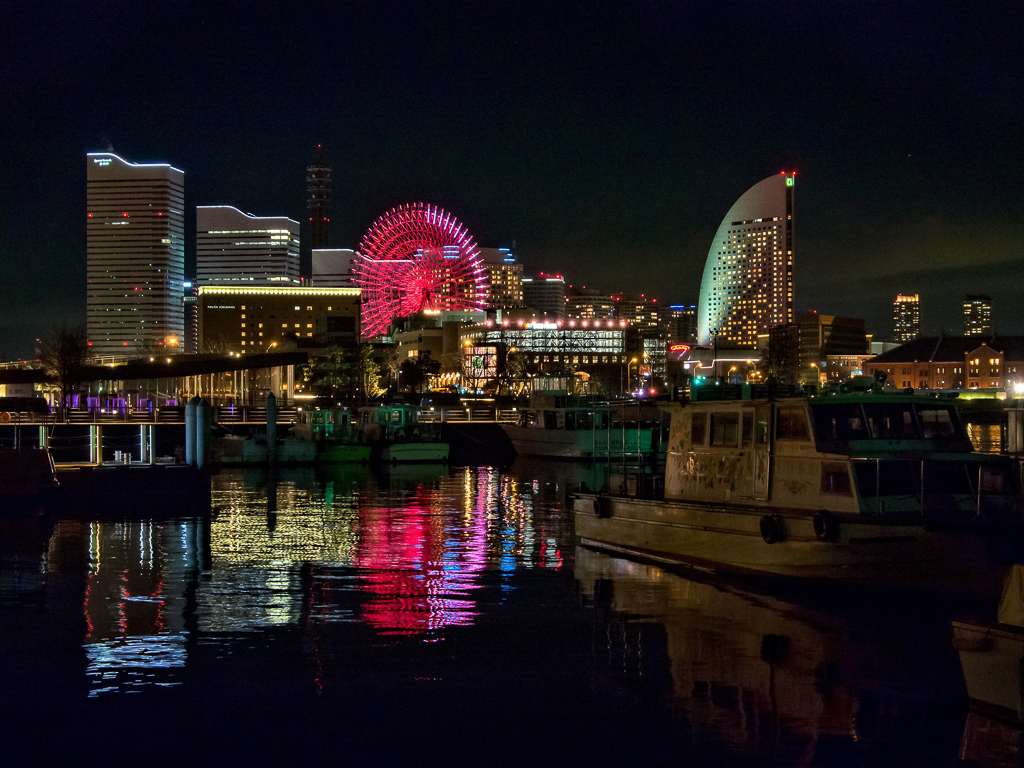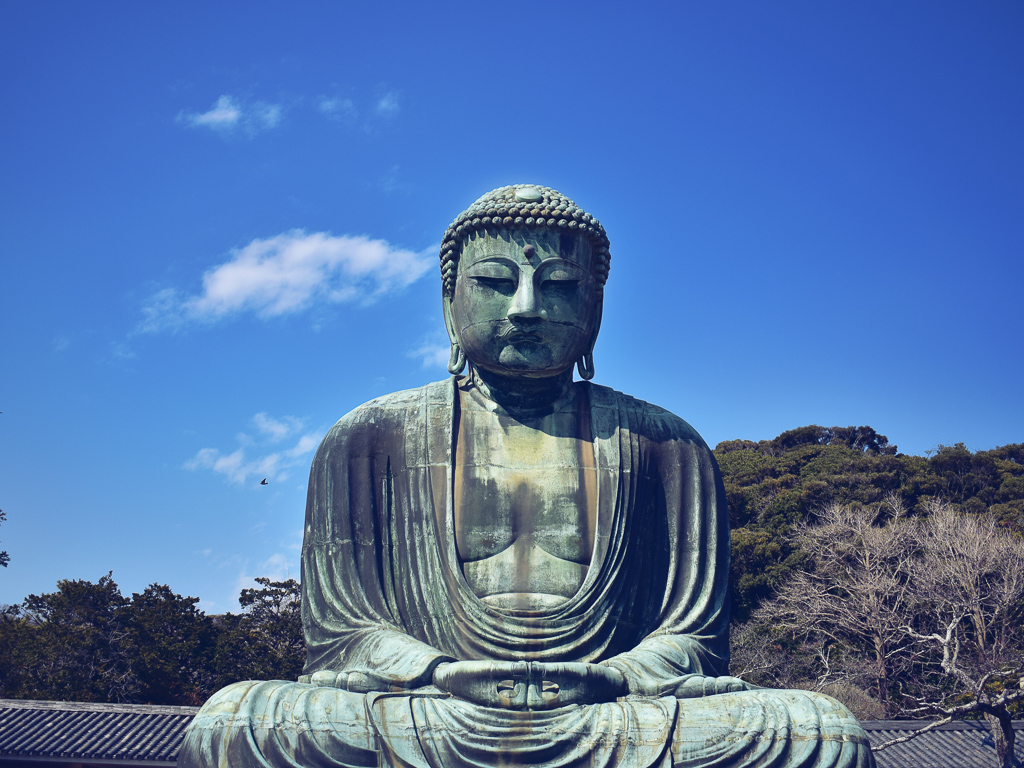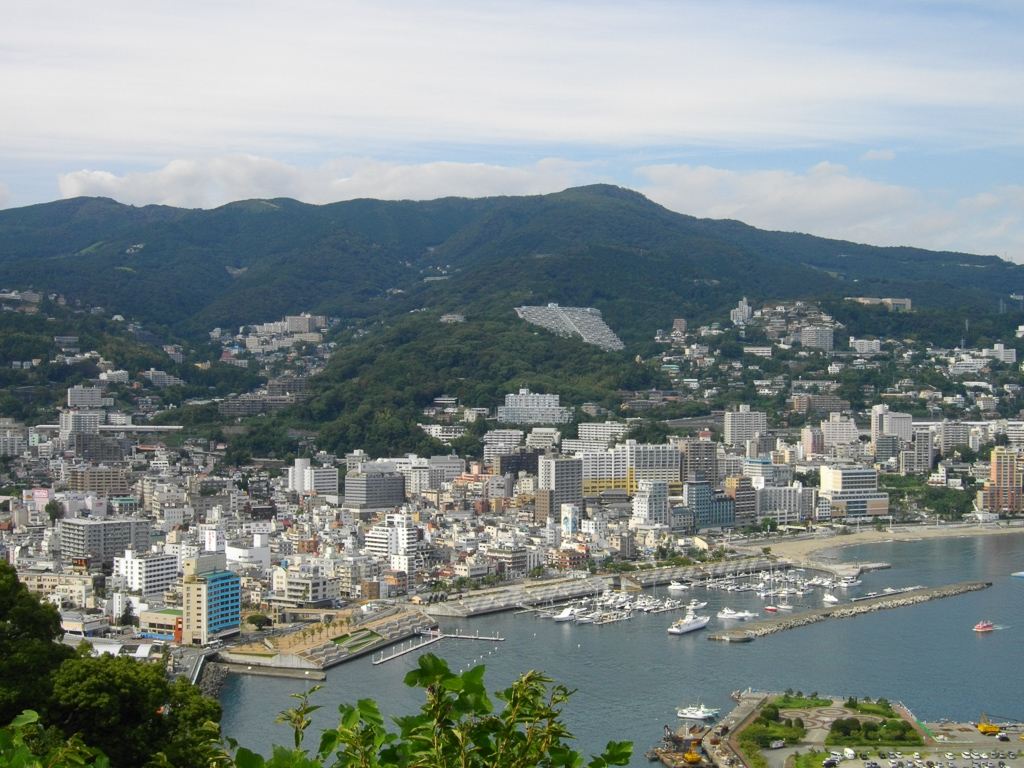Tokyo is the largest city in the world (depending on how you measure, anyway), and has a proportionally large number of things to do—as you may discover from our all-day or introductory tours. However, Tokyo’s seemingly endless sprawl can wear on visitors, making the day trip a good option for those seeking fresh air or new sights. With that in mind, here’s our (opinionated) list of the best day trips from Tokyo.
1. Sample the springs in HAKONE
Hakone is often known as the gateway to Mt. Fuji, offering tranquil water views of Lake Ashi as well as some of the country’s best known hot springs. Spend your day in one of the many public bath houses (onsen), fed by over twelve natural hot springs, that are nestled in the rolling hills surrounding the lake. If possible, Hakone is best visited in the fall, when the change in season turns Hakone’s hillsides a gorgeous golden hue.
Distance from Tokyo: 60 miles, 1 1/2 to 2 hours by train
Getting there: Take the Odakyu Railway from Tokyo’s Shinjuku Station, descending at Hakone-Yumoto. A one way express trip runs about 90 minutes (¥2280); slower trains require a transfer at Odawara Station and take roughly two hours (¥1190). Onsen entry typically costs between ¥500 - ¥2000.
2. Hike on MOUNT TAKAO
Less than an hour from central Tokyo, Mount Takao is best known for tranquil hiking trails that lead to its nearly 600-meter summit. The hike to the top takes about 90 minutes—half that if you hop the cable car—and trekkers making day trips from Tokyo are rewarded with sweeping views of the city. Truly keen hikers can keep going beyond the mountain’s summit, treading paths that connect to Chichibu-Tama-Kai National Park. A well-known spot for viewing fall foliage and spring cherry blossoms, it’s best to visit on weekdays to avoid crowds at that time of the year.
Distance from Tokyo: 37 miles, less than 1 hour by train
Getting there: Take the Keio express line from Shinjuku to the line’s terminus, Takaosanguchi, at the bottom of the mountain (¥390) or, if you have a JR Pass, take the JR Chuo line from Shinjuku to Takao Station and then change to the Keio line one more stop to Takaosanguchi.
3. Admire the Buddha in KAMAKURA
Though it’s popular for its shaded hiking trails and tidy beach, what draws people miles from Tokyo to Kamakura is something bigger—Japan’s second-largest Buddha. The Great Buddha of Kamakura, at Kotokuin Temple, dates back to 1252 and stands 13 meters (43 feet) high. (The county’s largest is in Nara, south of Kyoto).
Perhaps even more fascinating than admiring the Buddha’s exterior is heading inside of it—one can admire the hollow structure from its interior as well, providing insights into how it was made and the craftsmanship that enabled its construction.
Distance from Tokyo: 35 miles, 1 hour by train
Getting there: You can travel with Context to Kamakura, by booking our Kamakura day trip here. Or, take the JR Yokosuka Line from Tokyo Station directly to Kamakura Station or the JR Shonan Shinjuku Line bound for Zuchi from Shinjuku Station to Kamakura (both 60 minutes, ¥920 one way).
4. Scale the summit of MOUNT FUJI
Likely the most popular day trip from Tokyo, Mount Fuji sits roughly 100 miles southwest of Tokyo. In addition to hiking the summit, take time to explore the Fuji Five Lakes—Kawaguchiko (or Lake Kawaguchi), Saiko, Yamanakako, Shojiko and Motosuko—which provide a host of outdoor activities from fishing to camping. We’re particularly fond of the northern shore of Lake Kawaguchiko, which boasts a stunning view of the mountain coupled with cherry blossoms (in mid-April) or vibrant foliage (in November). If you do wish to hike to the top, be mindful of the season; the trails are only open from July to September.
Distance from Tokyo: 100 miles, travel time depends on mode of transportation
Getting there: There are a host of different ways to get to Mount Fuji. To head to the Gotemba trail (one of the most popular), take the JR Tokaido line from Tokyo Station to Kozu, then transfer to the JR Gotemba Line for Numazu and get off at Gotemba (about ¥2000).
5. Revel in the nature of NIKKO
Nikko brings together two of the most lovely aspects of visiting Japan—pristine nature and temples. Serving as the entrance to Nikko National Park (home to waterfalls, hiking, hot springs and even some wild monkeys), Nikko is also home to one of the most intricate, awe-inspiring temples in all of Japan: Tosho-gu. What’s more, Nikko lays on the Romantic Road, possibly Japan’s premiere road trip route, dotted with quirky towns, hot springs, mountain resorts and stunning natural beauty. Sitting just under 100 miles from Tokyo, it makes for a long day trip but is one of our favorite ways to explore Japan’s less dense side.
Distance from Tokyo: Approximately 90 miles, 3 hours by train
Getting there: From Tokyo or Ueno Stations, take the JR Tohoku Shinkansen (“Yamabiko” or “Nasuno Trains”) to Utsunomiya. From there, transfer to the JR Nikko Line and ride to Nikko Station (¥2,590).
6. Soak up the sunshine in ATAMI
If you’re looking to spend quality time in the water on your day trip from Tokyo, trade your walking shoes for flip flops and travel to Atami, a holiday retreat for Tokyoites since 8th century CE. The seaside city, whose name translates to “hot ocean,” is known for its naturally occurring hot springs. Before taking a soak, stretch your legs at Kinomiya Shrine, 15 minutes’ walk from Atami and home to a 1,300-year-old tree that’s believed to give an extra year of life to anyone who walks around it. Cool down inside the MOA Museum of Art (admission fee ¥1,600), whose contemporary entrance belies its collection of traditional Japanese and Chinese paintings and ceramics, lacquerware, calligraphy and sculpture.
Distance from Tokyo: 70 miles, 40-50 mins by train
Getting there: Take the JR Tokaido Shinkansen from Tokyo Station to Atami (40-50 minutes, ¥3,670/one-way non-reserved seat). This ticket is included in the JR Pass but not the JR East or JR Kanto Area passes.
7. Explore the IZU PENINSULA
There are a number of other towns and attractions on the Izu Peninsula (where Atami is located)—all about an hour away (~70 miles) from Tokyo by shinkansen. Ito and Shimoda are both pleasant seaside towns, with the former featuring lovely historical buildings and the latter being in close proximity to Shirahama Beach, a white-sand stretch of coast. Cape Irozaki features a rugged coastline and lovely shrine to admire it from, while Shuzenji is one of the oldest and most rustic hot spring towns.
Distance from Tokyo: About 70 miles, 40-50 mins to Atami plus a short ride on local trains to individual towns
Getting there: Follow the road to Atami noted above. Once you’re on the Ito peninsula, there are inexpensive local trains that will take you between towns.
8. Discover the “sweetest” street in KAWAGOE CITY
Known colloquially as “Little Edo,” Kawagoe’s clay-walled warehouses are reminiscent of buildings from the Edo period, providing a marked contrast to Tokyo’s hyper-modernity. Among the most important historical sites in the town are Kawagoe Castle, one of the most strategic sites for the Tokugawa Shogunate, and Kitain Temple, boasting 540 distinct stone statues depicting disciples of Buddha.
Don’t miss Candy Alley, a hotbed of candy making that emerged to fill Tokyo’s demand for sweets after much of the capital’s manufacturing was destroyed during the Great Earthquake of 1923.
Distance: 27 miles, 55 mins by train
Getting there: Kawagoe Station is easily accessible from Shibuya Station via the JR Saikyo/Kawagoe Line (55 minutes, ¥760 one way).
9. Immerse into the quirky flavor of YOKOHAMA
Despite being overshadowed by Kyoto and Osaka, the second largest city in Japan is actually Yokohama—and it’s a 30-minute trip from Tokyo, no less. Yokohama has a host of fun, quirky attractions to differentiate itself from Tokyo—we’re big fans of the Cup Noodles Museum and the Shinyokohama Raumen Museum, for instance. Yokohama also has the largest Chinatown in Japan, providing insight on the intersection and mutual inspiration the two countries have had on one another.
Distance from Tokyo: 20 miles, 30 mins by train
Getting there: The cheapest way to get from Tokyo to Yokohama is via the Tokyu Tokoyo line, which runs between Shibuya Station and Yokohama Station in 27 minutes (¥270). There are also other direct trains that run from Tokyo to Yokohama from most major stations in Tokyo.

10. See the Shrine of CHICHIBU
Long off the tourist map thanks to its location at the westernmost tip of the Saitama prefecture, Chichibu today is known for a long tradition of mountain asceticism and the Chichibu shrine. Hand-carved by Hindari Jingoro, the artisan responsible for Nikko’s Tosho-gu shrine, the shrine is reputed to have been founded by mythological Emperor Sujin in the first century (though the shrine’s buildings date to the Edo Period of the 18th century). Chichibu is also home to special seasonal events: visit in the spring for a glimpse of shibazakura, a moss whose vibrant pink blooms cover the nearby hillsides, or in early December to take in the town’s famous Night Festival.
Distance from Tokyo: 60 miles, 70 mins by train
Getting there: Hop on the Seibu Ikebukuro line’s Red Arrow limited express trains from Tokyo’s Ikeburo station. A one-way trip takes about 70 minutes.

Want to learn with a true expert? Get a comprehensive view with one of Context's private or small group tours in Tokyo!
Can't make it to Japan yet? Bring the beauty of Japan to your living room with our interactive, live-taught seminars.
You May Also Like:
- How to Get the Full Sake Experience in Tokyo Japan
- Discovering Tokyo's Culinary Treasures: A Guide to Local Markets, Street Food, and Gourmet Delights
- Discovering the Delights of Tsukiji Outer Market – How to Visit Tokyo's Famous Fish Market
- Discovering Asakusa, Tokyo's Historic Neighborhood
- Things to do in Tokyo, Japan with Kids
- Things to do in Tokyo: Planning Your Perfect Trip
- Things to do in Kyoto
- 10 Great Books Set in Japan





















